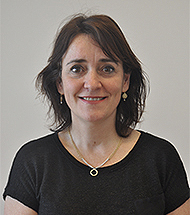News
LATEST NEWS AND EVENTS FROM THE SCHOOL OF ENGINEERING
World Environment Day
Mentxu Jaca, professor and researcher at Tecnun, reflects on the need to question our consumption habits.

Today, June 5, is World Environment Day. This day offers us the opportunity to question our consumption habits and reflect on our contribution to a sustainable and fair development .
The current economic model is based on linear production focused on "extract, make, use and throw away". Companies strive to improve their productivity and reduce costs individually, without taking into account the impact that their activity can have on the system: waste generation, emissions associated with transportation, resource depletion, social impact, etc. ..... This productive model leads irremissibly to the depletion of natural resources on the one hand, and to the degradation of the environment on the other, caused by inefficient waste management.
The economic and social consequences of this productive model are already demanding a change in the way consumers, companies and governments manage their relationship with the environment. In this context, the concept of Economics Circular arises as an alternative to the linear model , understanding the Economics as a system that imitates nature: everything is used in a cyclical way and the products and services are beneficial for people, the Economics and the environment.
Sometimes the Economics Circular is confused with waste treatment and management, but it is much more than that. In the Economics Circular, waste becomes a resource, just as it happens in nature. For this to be possible, companies must change the way they design and conceive products, thinking from the outset about how they will be produced, distributed, used and returned to the value chain, so that they cause the minimum impact on the environment and generate social and economic value.
Let's take the example of a T-shirt. A company that applies the circular Economics should design the T-shirt thinking about the materials to be used and choose those that are sustainable from their cultivation or extraction, taking into account the environmental and social impact. Similarly, manufacturing processes should be designed to be as efficient and sustainable as possible in terms of energy and resource consumption. The distribution of the T-shirt would seek local markets and the minimization of packaging (the questionable plastic bag could be avoided).
For the use phase the manufacturer should have thought about how to make its product last as long as possible, avoiding materials of leave quality or making repair parts available to the customer, for example. Finally, the end of use would ensure that the T-shirt, when we no longer like it or it is damaged, can be resold, repaired or recycled, in order to be able to convert the material it is made of into subject raw material for another product.
The goal of this new model is the regeneration of resources through closed consumption cycles and energy conservation in the process. Logically, this translates into improved profits for companies, by reducing their material, energy and transport costs, and their competitive position, by better adapting to the needs of their customers and giving their brand the value of sustainability and responsibility. No less important are the territorial benefits of this model: it avoids the depletion of increasingly scarce own materials and the consequent dependence on third countries to obtain them.
Europe, aware of the current scarcity of resources, has adopted the Economics Circular as its main strategy for development. In this sense, it has articulated an aid package to encourage the implementation of Economics Circular in different areas by European countries and companies. Large companies such as Coca-Cola, Ikea, Vodafone or H&M, as well as many SMEs, are already applying this model as an opportunity to better adapt to the market, improve their processes and become more competitive.
However, many companies do not really know how to start or where to start. In our department we have a line of research focused on the Economics Circular applied to SMEs and we have found that there are always opportunities for improvement in this regard. The Economics Circular is a transversal model , so any sector or company can apply this model, thus improving their business and contributing to a better world.

